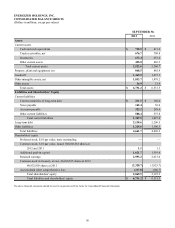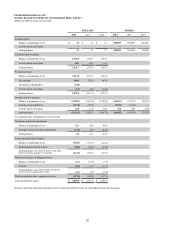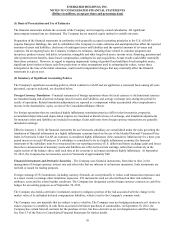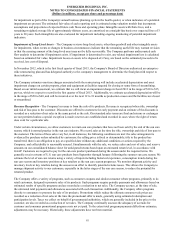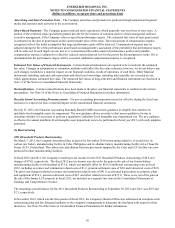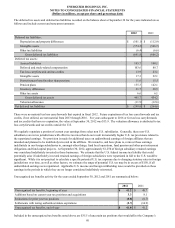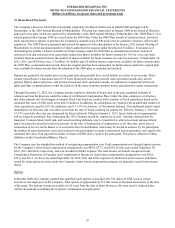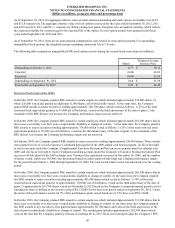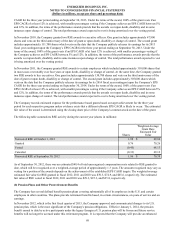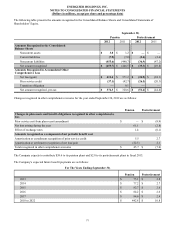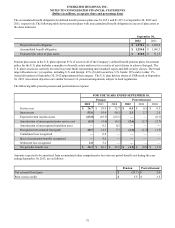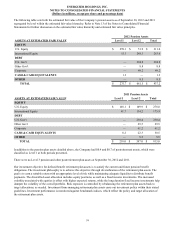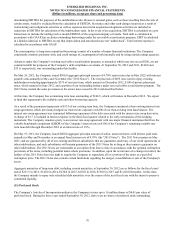Energizer 2012 Annual Report Download - page 76
Download and view the complete annual report
Please find page 76 of the 2012 Energizer annual report below. You can navigate through the pages in the report by either clicking on the pages listed below, or by using the keyword search tool below to find specific information within the annual report.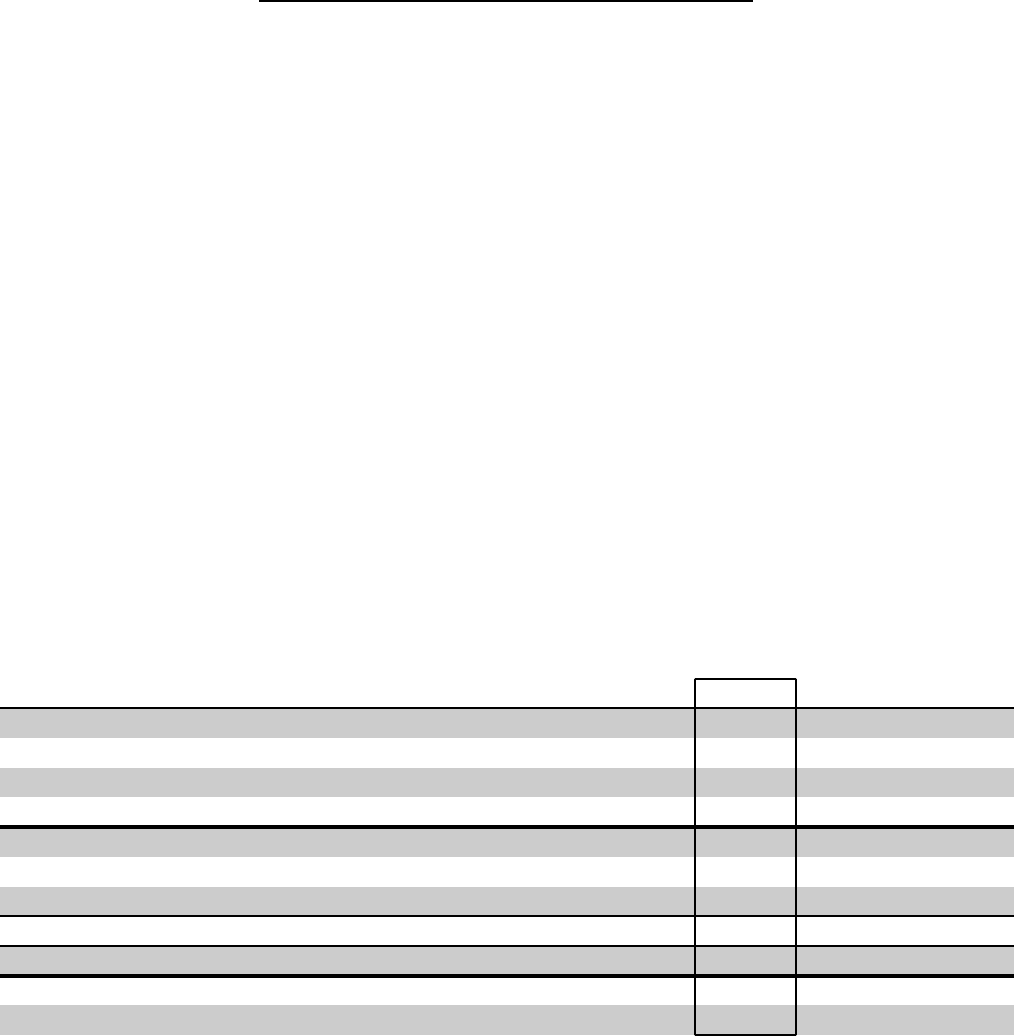
ENERGIZER HOLDINGS, INC.
NOTES TO CONSOLIDATED FINANCIAL STATEMENTS
(Dollars in millions, except per share and percentage data)
effective tax rate, if recognized. The Company does not expect any significant increases or decreases to their unrecognized tax
benefits within twelve months of this reporting date. In the Consolidated Balance Sheets, unrecognized tax benefits are
classified as Other liabilities (non-current) to the extent that payments are not anticipated within one year.
The Company classifies accrued interest and penalties related to unrecognized tax benefits in the income tax provision. The
accrued interest and penalties are not included in the table above. The Company accrued approximately $9.0 of interest and
$2.8 of penalties at September 30, 2012 and $7.6 of interest and $2.8 of penalties at September 30, 2011. Interest was computed
on the difference between the tax position recognized in accordance with GAAP and the amount previously taken or expected
to be taken in the Company’s tax returns.
The Company files income tax returns in the U.S. federal jurisdiction, various cities and states, and more than 50 foreign
jurisdictions where the Company has operations. U.S. federal income tax returns for tax years ended September 30, 2007 and
after remain subject to examination by the Internal Revenue Service. With few exceptions, the Company is no longer subject to
state and local income tax examinations for years before September 30, 2003. The status of international income tax
examinations varies by jurisdiction. The Company does not anticipate any material adjustments to its financial statements
resulting from tax examinations currently in progress.
(6) Earnings Per Share
For each period presented below, basic earnings per share is based on the average number of shares outstanding during the
period. Diluted earnings per share is based on the average number of shares used for the basic earnings per share calculation,
adjusted for the dilutive effect of stock options and restricted stock equivalents.
The following table sets forth the computation of basic and diluted earnings per share:
(in millions, except per share data)
FOR THE YEARS ENDED
SEPTEMBER 30,
2012 2011 2010
Numerator:
Net earnings for basic and dilutive earnings per share $ 408.9 $ 261.2 $ 403.0
Denominator:
Weighted-average shares - basic 64.9 69.6 70.0
Effect of dilutive securities:
Stock options 0.2 0.2 0.2
Restricted stock equivalents 0.6 0.5 0.3
Total dilutive securities 0.8 0.7 0.5
Weighted-average shares - diluted 65.7 70.3 70.5
Basic net earnings per share $ 6.30 $ 3.75 $ 5.76
Diluted net earnings per share $ 6.22 $ 3.72 $ 5.72
At September 30, 2012, approximately 0.4 of the Company’s outstanding restricted stock equivalents and stock options were
not included in the diluted net earnings per share calculation because to do so would have been anti-dilutive. In the event the
potentially dilutive securities are anti-dilutive on net earnings per share (i.e., have the effect of increasing earnings per share),
the impact of the potentially dilutive securities is not included in the computation. There were approximately 0.7 and 1.2 anti-
dilutive securities at September 30, 2011 and 2010, respectively, which were not included in the diluted net earnings per share
calculations for the reason noted above.
66


